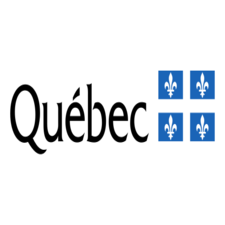Northern Quebec
Type of resources
Topics
Keywords
Contact for the resource
Provided by
Formats
Representation types
Update frequencies
status
-

**Permafrost** is any soil or rock whose temperature has remained below 0°C for years. In the extreme north of Quebec, it is omnipresent and very thick. At its boreal margin, further south, it appears in the landscape in the form of isolated thin plates, whose thickness is generally less than 10 m. Permafrost contains ice in various forms, whose origin is closely linked to the sedimentary characteristics and drainage conditions of the land. The mapping of permafrost conditions for Nunavik (territory located north of the 55th parallel), carried out by the Center for Nordic Studies at Laval University, was done by applying a simple model called TTOP (Temperature at the Top Of Permafrost) for the period from 2000 to 2016. The results of the model are presented in the form of a raster file that illustrates the distribution of continuous, discontinuous, and sporadic permafrost, as well as isolated islands. Under the effect of global warming or poorly adapted human activities, permafrost heats up or even thaws, which leads to settlements and ground movements affecting ecosystems as well as infrastructures. Thus, the susceptibility of the territory to thermokarstic subsidence was evaluated for the same territory taking into account the ice content and the temperature at the top of the permafrost. A matrix file (raster) of the susceptibility of the territory to ground subsidence associated with permafrost thaw presents three susceptibility classes (high, moderate, and low) as well as areas generally without permafrost.**This third party metadata element was translated using an automated translation tool (Amazon Translate).**
 Arctic SDI catalogue
Arctic SDI catalogue